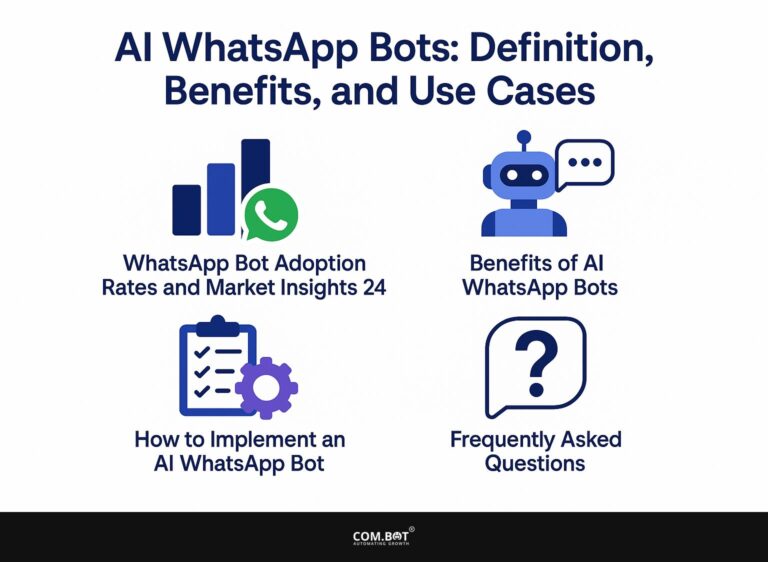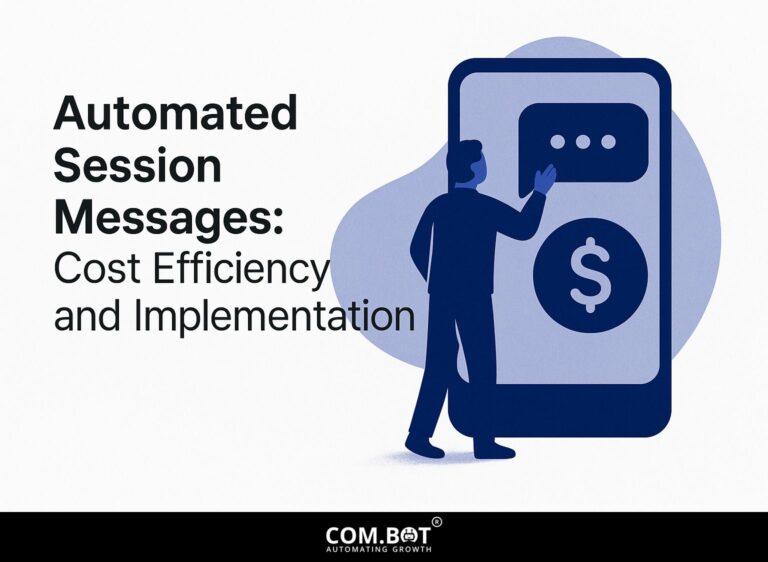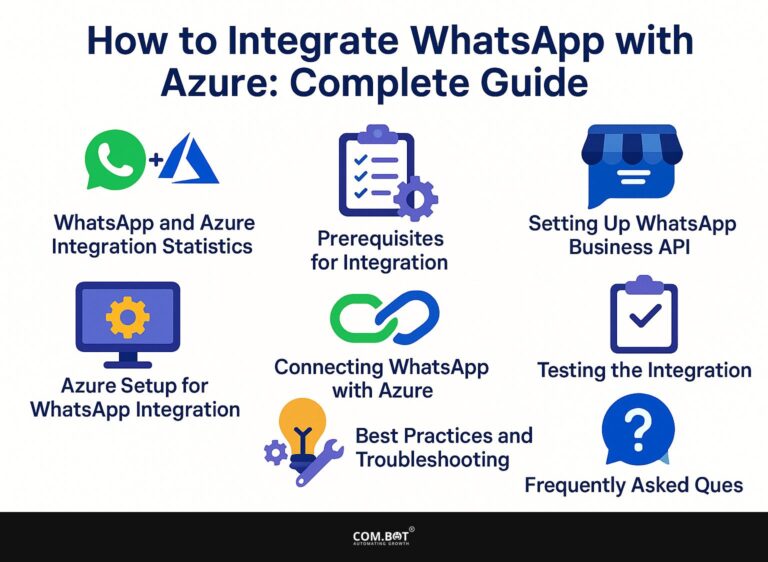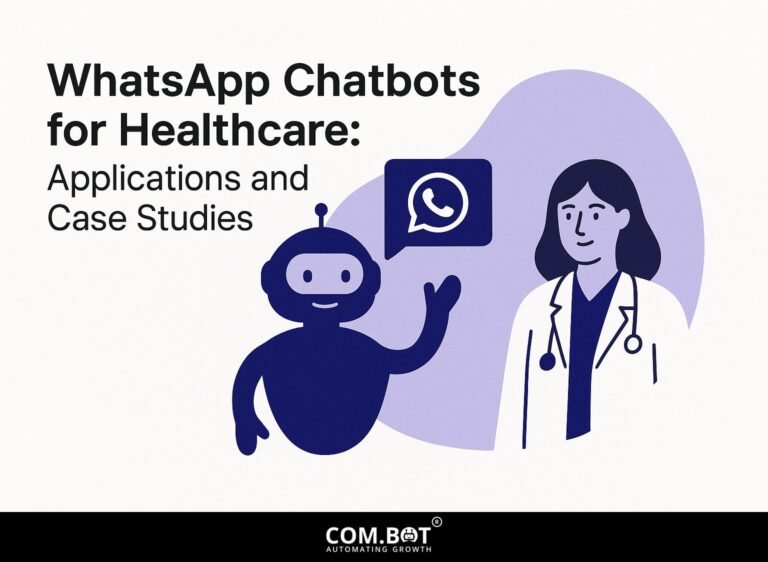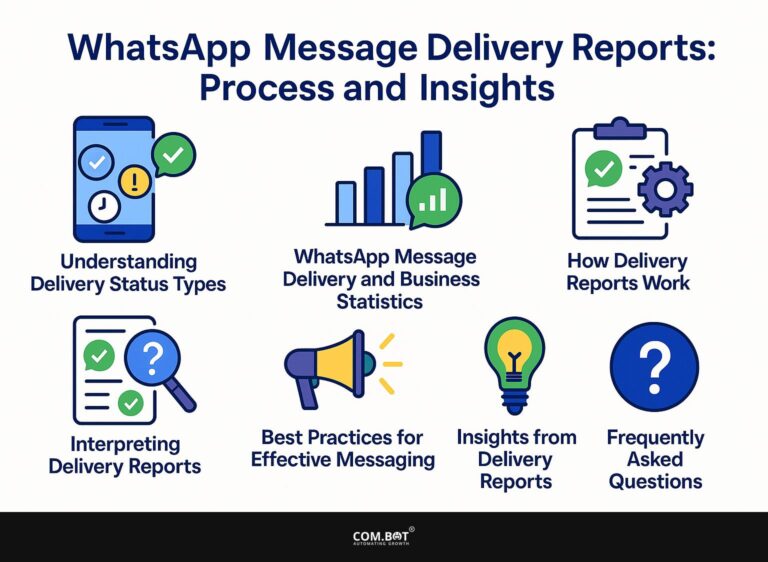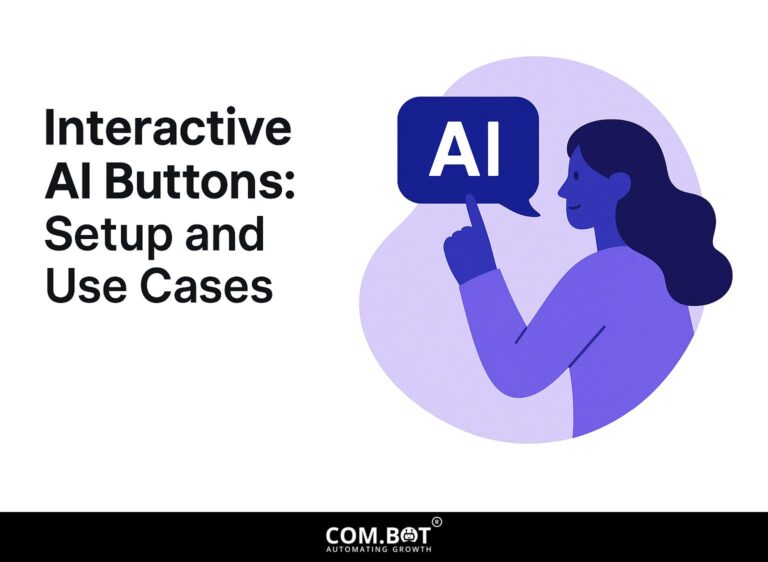HR Bots for WhatsApp: Functions and Internal Use
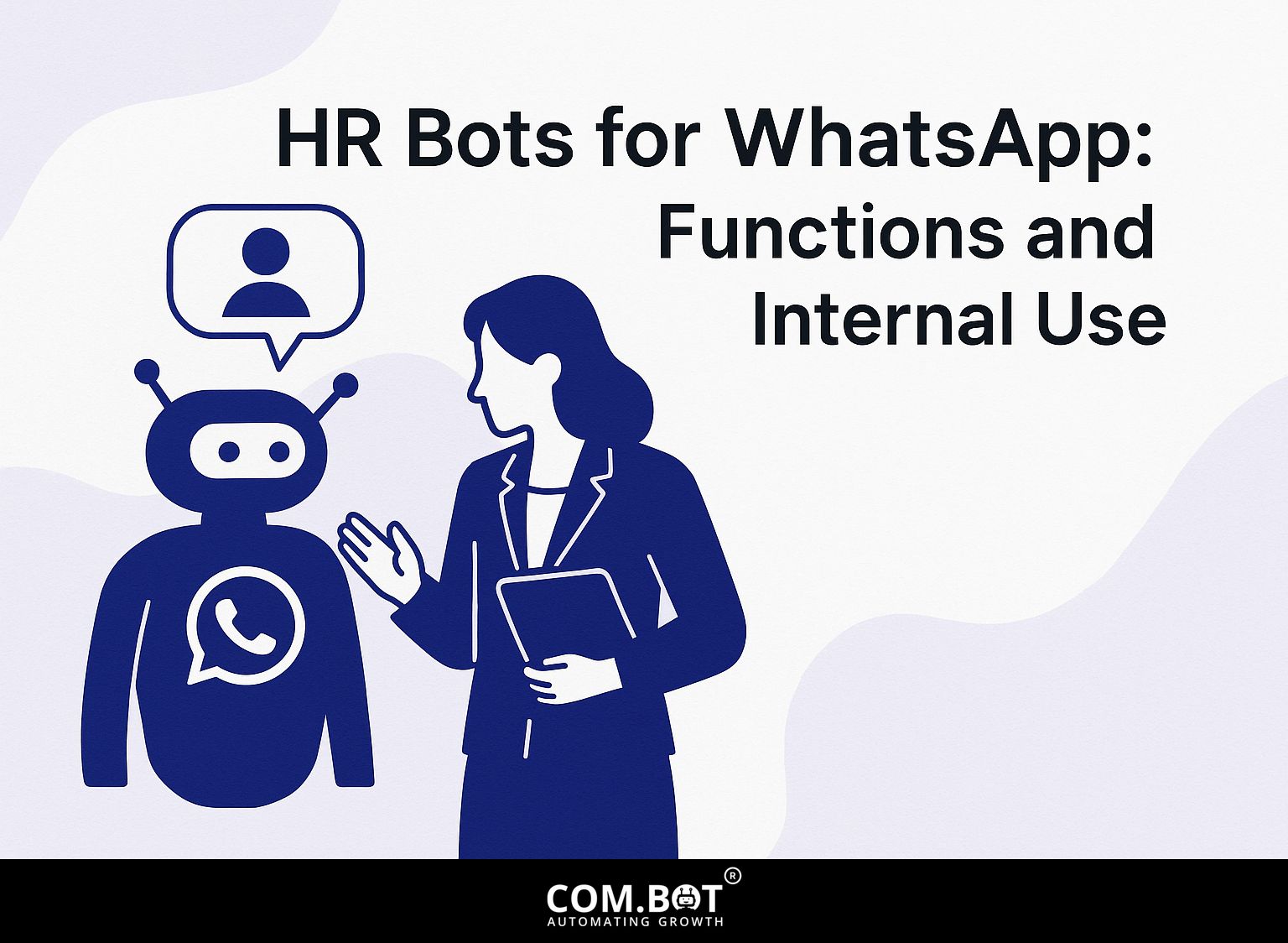
Want to make your Human Resources tasks more efficient? HR bots for WhatsApp are revolutionizing HR automation by enhancing communication and simplifying tasks like employee onboarding and leave requests. ChatArchitect offers new solutions that help organizations use WhatsApp to work better and connect with employees more effectively. In this article, we’ll look at the main functions of these bots, how they are used within the company, and how they can change your HR processes.
Key Takeaways:
- HR bots on WhatsApp offer a convenient and efficient way for HR departments to handle various tasks, such as employee onboarding, FAQ answering, and leave management.
- Integrating HR bots with WhatsApp requires technical setup and considerations for user experience, but can bring significant benefits to internal processes.
- HR bots have limitations and privacy concerns, but they are expected to improve with AI and machine learning, and will be used on more messaging platforms.
- 1 Core Functions of HR Bots
- 2 Integration with WhatsApp
- 3 WhatsApp HR & Business Statistics
- 4 Internal Use Cases
- 5 Challenges and Limitations
- 6 Future Trends in HR Bots
- 7 Frequently Asked Questions
- 7.1 1. What are HR Bots for WhatsApp and how do they function?
- 7.2 2. What is the purpose of using HR Bots for WhatsApp?
- 7.3 3. Can HR bots on WhatsApp be used internally within a company?
- 7.4 4. What are some common functions of HR bots for WhatsApp?
- 7.5 5. Do HR bots for WhatsApp have access to sensitive employee data?
- 7.6 6. Can HR bots for WhatsApp handle complex HR-related tasks?
1. Definition and Purpose
HR bots, like ChatArchitect, serve as online assistants for employees, dealing with everyday questions and tasks related to HR processes.
These bots improve employee communication by giving quick answers to typical questions about benefits, policies, and company procedures.
For example, when an employee asks about leave requests, the bot can guide them through the steps using a user-friendly interface. It can manage onboarding tasks by offering checklists and tracking progress.
Tools like Talla and BambooHR also integrate similar functionalities, helping HR teams focus on strategic initiatives rather than repetitive queries. Implementing such automation can significantly reduce response times and improve employee satisfaction.
2. Benefits of Using HR Bots
Implementing HR bots can lead to a 40% increase in response speed for employee queries, greatly improving overall satisfaction and engagement.
One effective method is to use a tool like Zenefits, which answers frequently asked questions automatically, allowing employees to get instant responses.
By setting up a centralized knowledge base, HR departments can reduce the number of repetitive questions handled by staff. Using chatbots like Talla can improve communication by offering help around the clock.
Many companies report a 50% decrease in HR admin tasks, allowing teams to focus on strategic initiatives rather than routine inquiries.
Core Functions of HR Bots
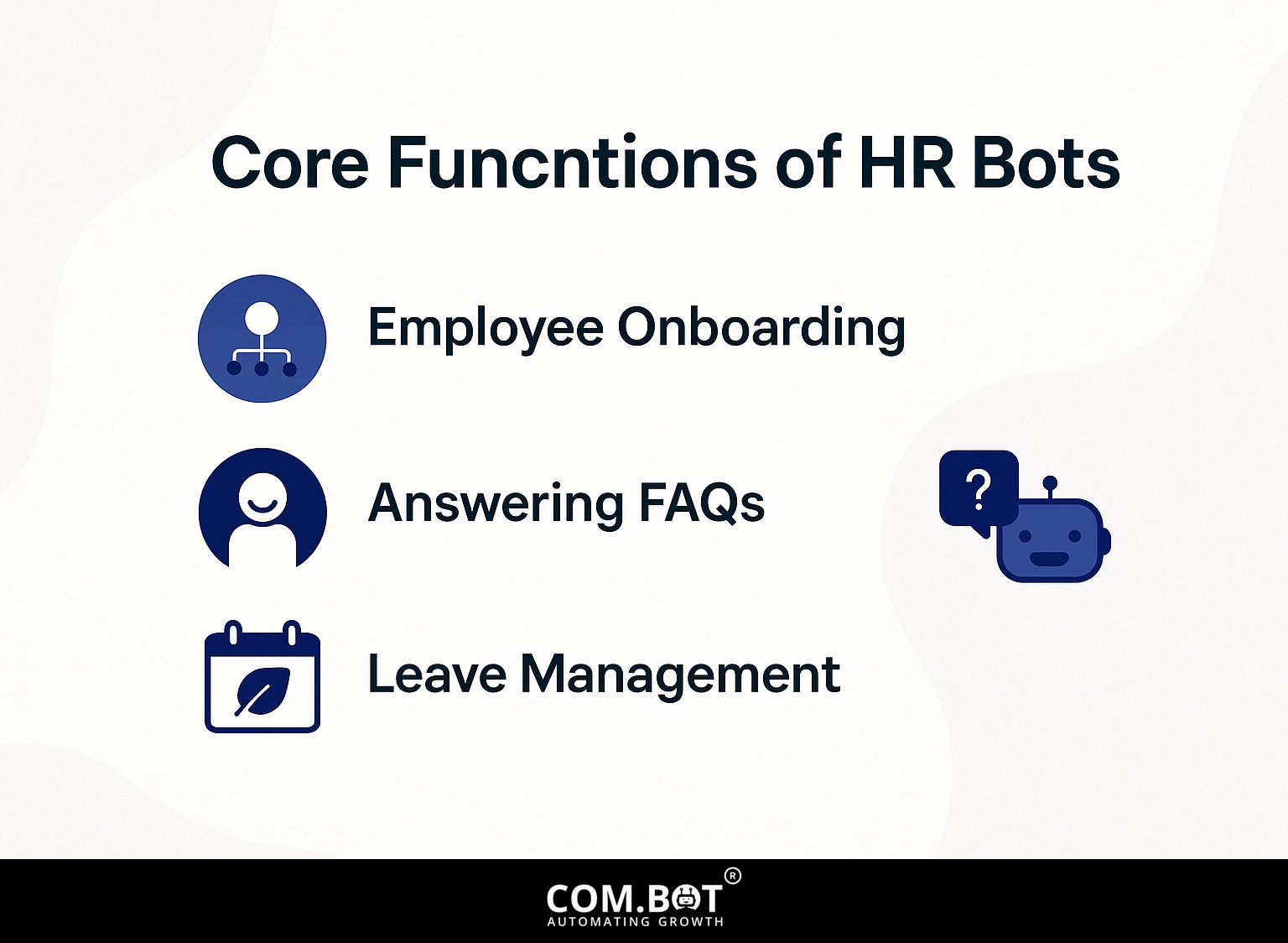
HR bots have key features that meet different employee needs and help create an easier HR process. This approach aligns with the principles outlined in our analysis of Com.bot HR Recruitment Automation.
1. Employee Onboarding
HR bots make it easy to hire new employees by sending training alerts and giving them customized onboarding lists. These bots can greatly improve how tasks are done.
For instance, a tech company implemented an HR bot for onboarding and reported a 30% reduction in the time new hires took to reach productivity. The bot provided detailed lists for each job, ensuring employees received the correct training materials and resources. Automatic prompts kept hiring managers engaged, leading to fast responses.
Programs like Talla or Saba Cloud help with these tasks, working easily with current HR systems to make onboarding easier.
2. Answering FAQs
HR bots can handle up to 80% of typical HR inquiries, providing instant responses to frequently asked questions about policies and employee benefits. Common HR questions include topics like vacation policies, salary structures, and leave procedures.
To improve your bot, use data analysis to find out which questions are asked most often. For example, if employees often ask about sick leave, you can improve the bot’s response with clear answers or extra resources like forms.
Tools like IBM Watson Assistant make it easier to analyze query logs and update FAQ content, ensuring the bot gives answers and adapts to what employees need.
3. Leave Management
HR bots make it easy to submit and approve leave requests, improving compliance and tracking. This simple process starts when employees submit requests through an easy-to-use portal. The HR bot then processes these submissions, automatically checking for policy violations like overlapping dates.
Once assessed, it sends approvals to the right managers, who can check and approve decisions using a simple dashboard. This automation typically reduces processing time from days to mere minutes, significantly increasing administrative efficiency.
Companies report up to a 50% reduction in leave request delays, allowing HR teams to focus on strategic initiatives rather than manual paperwork.
Integration with WhatsApp
Connecting HR bots with WhatsApp makes communication easy and improves how employees interact using a platform they know well. For more insights into this trend, our detailed look at WhatsApp AI Chatbots explores their growing popularity and functionalities.
WhatsApp HR & Business Statistics
HR Bots Usage on WhatsApp: Business Communication
HR Bots Usage on WhatsApp: WhatsApp Business Usage
HR Bots Usage on WhatsApp: WhatsApp Chatbot Usage
The WhatsApp HR & Business Statistics give a detailed explanation of how WhatsApp is used in business communication, especially with HR bots, and how it helps make operations smoother in different industries around the world. With 2.9 billion global users WhatsApp is a powerful tool for businesses to improve communication and interaction.
HR Bots Usage on WhatsApp showcases the platform’s influence in business communication. The 98% open rate of WhatsApp messages Messages sent through WhatsApp tend to be seen and read more often than those sent by email, making it a good choice for urgent communication. Moreover, the 52.5% click-through or conversion rate reflects the high engagement level, highlighting WhatsApp’s potential as a powerful tool for marketing and customer interaction.
Notably, 2.5 billion hours saved using WhatsApp bots exemplifies the efficiency gained through automation, which helps businesses focus on core activities by reducing manual, repetitive tasks.
WhatsApp Business Usage is significant, with 15 million Indian businesses Using WhatsApp, showing the app’s widespread use in India’s active business scene. Overall, 50 million businesses People all over the world use WhatsApp, highlighting its role as a communication tool for businesses of any size.
WhatsApp Chatbot Usage indicates that 67% of people trust WhatsApp chatbots This demonstrates the increasing acceptance of automated systems for handling customer service and HR tasks. The $11 billion savings from WhatsApp chatbot automation demonstrates substantial cost reductions, affirming the value chatbots bring to business operations by enhancing efficiency and reducing labor costs.
To sum up, many businesses are using WhatsApp, especially with HR bots and chatbots. This highlights its impact in changing communication, increasing interaction rates, and building confidence in automated services. Businesses using WhatsApp can save a lot of time and money while improving their communication effectiveness and reach.
1. Technical Setup
Setting up HR bots on WhatsApp typically involves using the WhatsApp Business API, which can take approximately 3-5 hours for initial configuration.
- Start by obtaining access to the WhatsApp Business API from a service provider like Twilio or MessageBird.
- Next, configure your webhook to handle messages, ensuring clear routing for HR inquiries.
- Use tools like Dialogflow or Chatfuel to set up chat paths, enabling the bot to answer typical HR questions about leave policies or employee benefits.
- Test the bot thoroughly with your team to make its answers better before letting users access it.
2. User Experience Considerations
A well-planned HR bot on WhatsApp can greatly improve user experience, resulting in a 25% rise in employee happiness.
When developing this chatbot, consider including features such as options for personalization, accurate responses, and user-friendly menus.
Salesforce uses specific greetings and personalized responses based on user questions, which makes the experience more engaging. IBM’s Watson Assistant handles detailed employee questions effectively, giving users the right information fast.
Think about using chatbot tools like Dialogflow or ManyChat to make the development process easier and to provide quick, user-friendly responses.
Internal Use Cases
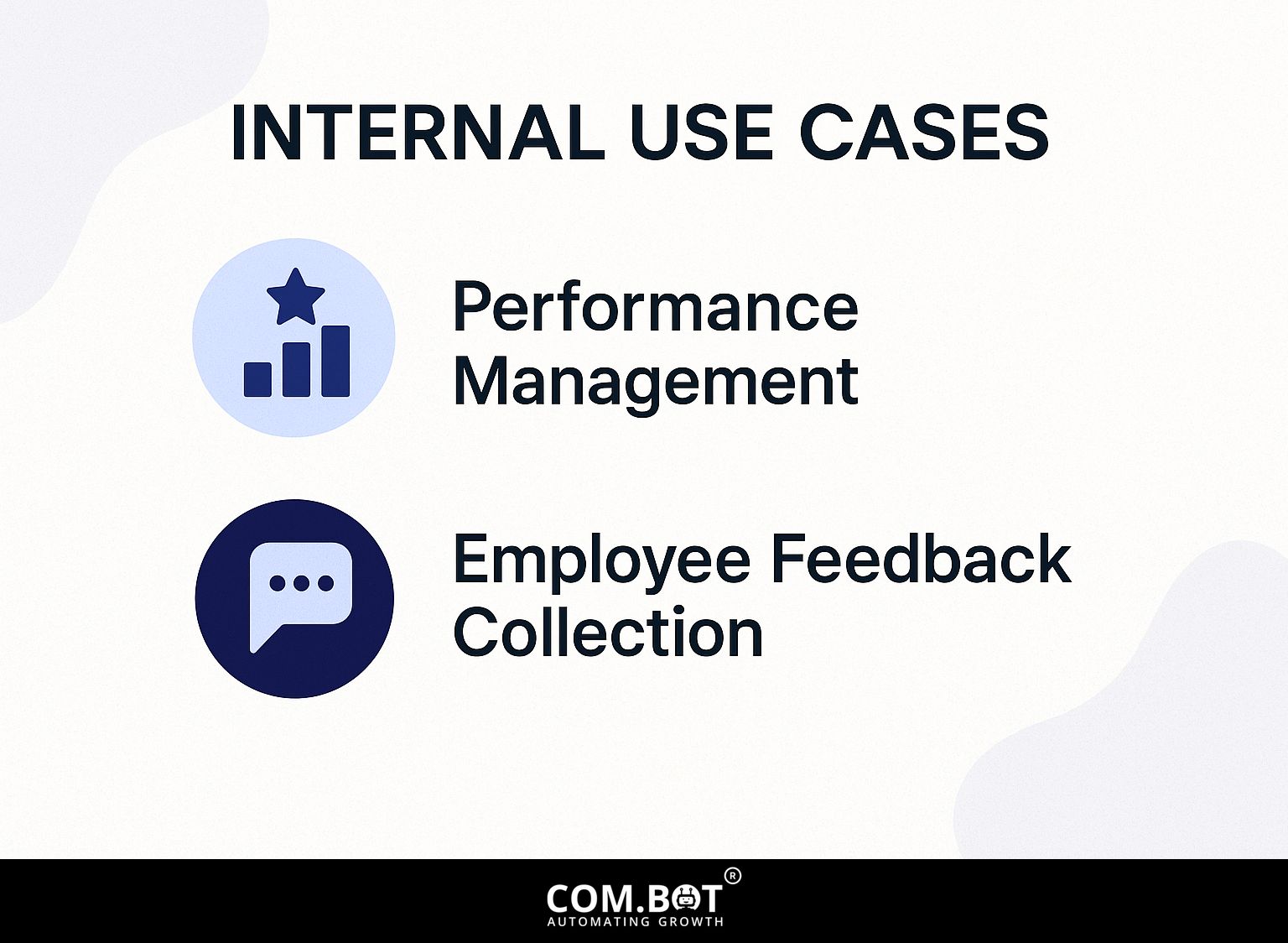
HR bots can be effectively used for different tasks within a company, improving how performance is tracked and gathering employee feedback. For a deeper understanding of these applications, explore our detailed insights on Internal & HR Workflows.
1. Performance Management
HR bots can help with performance management by organizing review meetings and sending alerts to managers and workers. These bots make the review process easier by handling tasks like calendar invites and follow-up messages automatically.
For instance, using tools like TINYpulse or Lattice, HR teams observe a 30% increase in on-time feedback delivery. Chatbot features allow employees to provide real-time feedback, enhancing engagement.
Many organizations report that integrating these bots reduces administrative tasks by up to 50%, allowing managers to focus more on coaching rather than paperwork. This leads to timely evaluations and increases employee happiness and performance measures.
2. Employee Feedback Collection
Using HR bots to collect feedback can increase employee participation in surveys by up to 60%, giving instant information.
To effectively collect feedback, design concise surveys focusing on specific areas such as job satisfaction or workplace culture. Tools like SurveyMonkey or Google Forms can help create these surveys.
Make a chatbot like Talla or Lattice that encourages employees to share their thoughts. For example, one company achieved a 70% response rate after using a Talla bot that asked employees questions for monthly check-ins.
Using dashboards to track results helps find patterns and areas where things can be better, turning this information into practical plans.
Challenges and Limitations
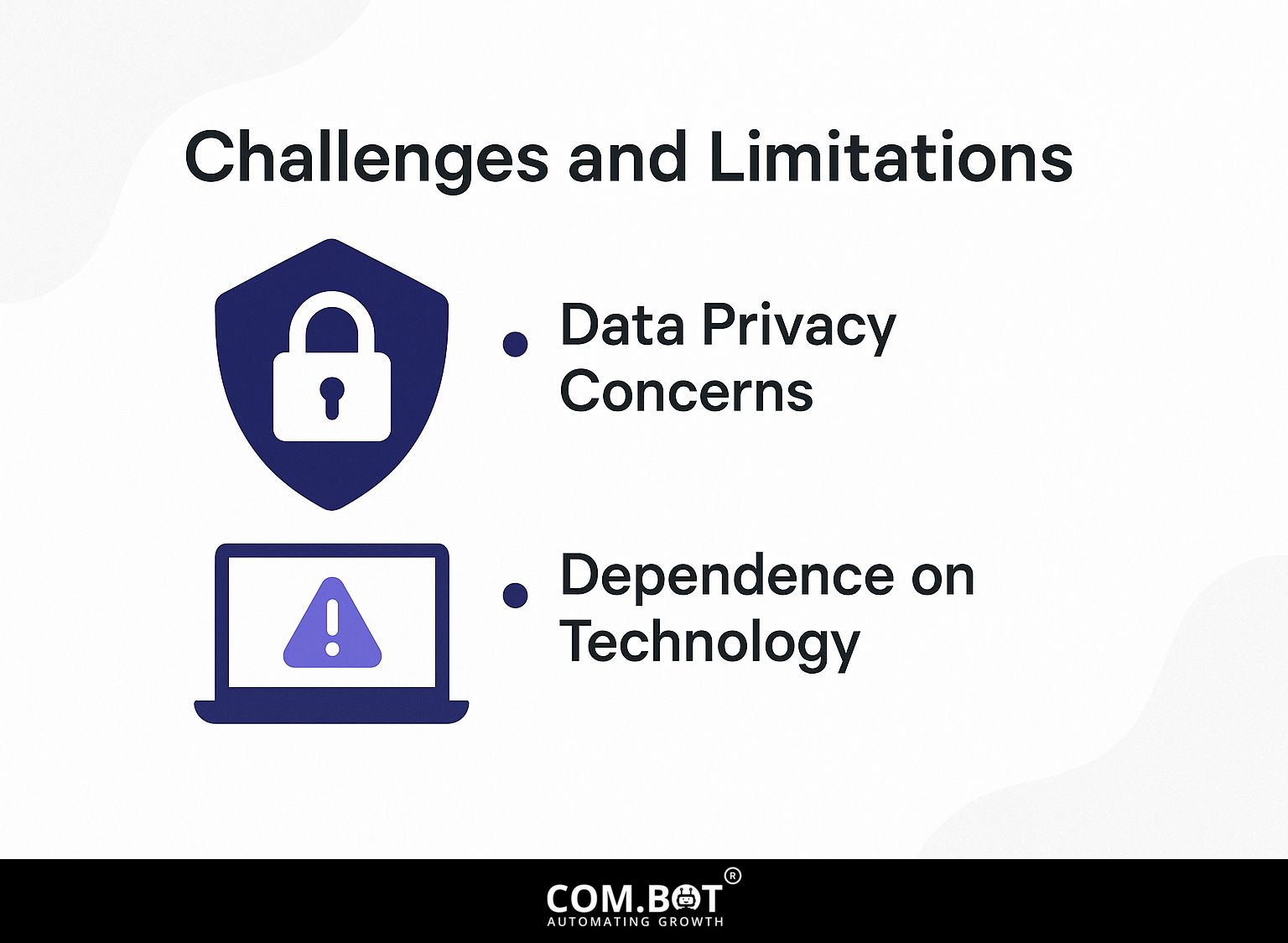
Even with their benefits, HR bots can struggle to work well due to privacy issues and too much dependence on technology. Exploring secured chatbots features and use cases offers insights into overcoming these challenges effectively.
1. Data Privacy Concerns
Data privacy is a significant concern with HR bots, particularly regarding sensitive employee information being exposed or mismanaged. To lower these risks, organizations can use different methods.
- Begin with data encryption to keep employee information safe when stored and when being sent. Utilizing tools like VeraCrypt for encryption can add a significant layer of protection.
- Regular checks help find weaknesses in the system, so you can fix them quickly.
- Establish clear access controls to limit who can view sensitive data.
- Think about using GDPR compliance tools like OneTrust to keep current with rule changes and maintain compliance.
2. Dependence on Technology
Over-dependence on technology can lead to potential gaps in employee support, particularly if the bot fails to understand specific queries.
To reduce this risk, having backup procedures is essential. For instance, set up a human support escalation process where complex queries are automatically forwarded to HR professionals.
Regular training sessions for staff can improve their skills in managing bot-related questions. Use tools like Zendesk or Freshdesk to monitor question types and find frequent problems, helping to make focused changes.
Observing these interactions will help you make both automated replies and human assistance better, ensuring a seamless experience for employees.
Future Trends in HR Bots
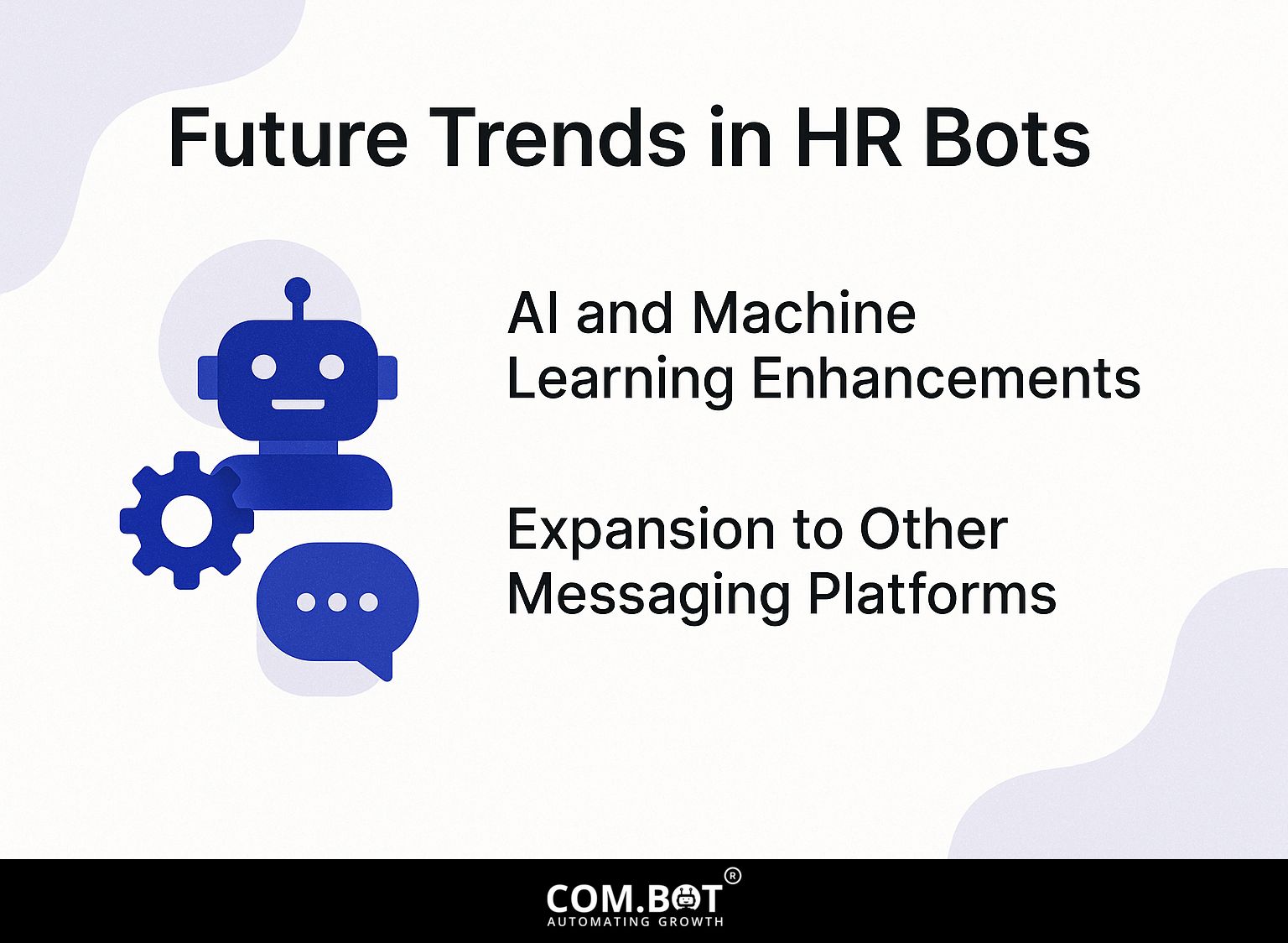
HR bots are likely to improve a lot, thanks to progress in AI and machine learning. For those interested in the specific advancements, take a look at our insights on Com.bot HR Service Automation to understand how these technologies are transforming HR services.
1. AI and Machine Learning Enhancements
Adding AI and machine learning to HR bots will allow for more customized and forecast-driven replies, improving how employees connect with their work.
For instance, existing AI capabilities allow HR bots to analyze employee interactions and sentiment, tailoring responses based on individual preferences.
Tools like Talla use natural language processing (NLP) to quickly answer typical HR questions, cutting down on waiting times.
Looking ahead, we can expect HR bots to proactively suggest training programs or wellness initiatives based on employee performance data. This change may result in employees feeling appreciated and understood, which can improve retention rates in companies.
2. Expansion to Other Messaging Platforms
As organizations adopt diverse communication tools, HR bots are expected to expand beyond WhatsApp into platforms like Slack and Microsoft Teams. This change requires flexible communication plans to make sure employees stay connected smoothly.
For example, companies like IBM and Unilever have used HR bots on different platforms to simplify tasks like onboarding and responding to common questions.
They can quickly create bots using tools like Botpress or the Microsoft Bot Framework, allowing the bots to work well on any messaging platform. This flexibility improves how employees feel about their work and helps HR to respond better in different situations.
Frequently Asked Questions
1. What are HR Bots for WhatsApp and how do they function?
HR bots for WhatsApp are chat programs that use artificial intelligence to talk with people and offer services related to human resources. They function by analyzing user input and responding with pre-programmed answers or by redirecting to a live HR representative.
2. What is the purpose of using HR Bots for WhatsApp?
HR bots for WhatsApp are used to make some HR tasks easier and quicker. They help with answering usual employee questions, giving details about company rules and benefits, and setting up meetings.
3. Can HR bots on WhatsApp be used internally within a company?
HR bots for WhatsApp can be used inside a company to help employees with HR tasks and offer support. This can improve efficiency and save time for both employees and HR personnel.
4. What are some common functions of HR bots for WhatsApp?
Some common functions of HR bots for WhatsApp include responding to employee inquiries, collecting and organizing employee information, scheduling and confirming appointments, and providing updates on company policies and procedures.
5. Do HR bots for WhatsApp have access to sensitive employee data?
No, HR bots for WhatsApp are only equipped with the information that is provided or authorized by the company. They do not have access to sensitive employee data unless it is specifically programmed for them to do so.
Yes, HR bots for WhatsApp can manage detailed HR tasks like running employee surveys, overseeing performance evaluations, and giving customized advice for training and improvement. They are constantly learning and improving their capabilities through artificial intelligence technology.
